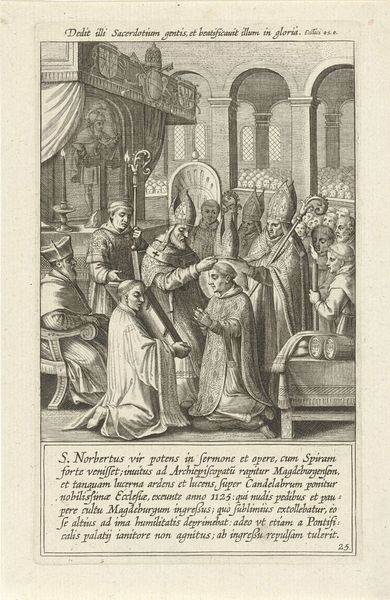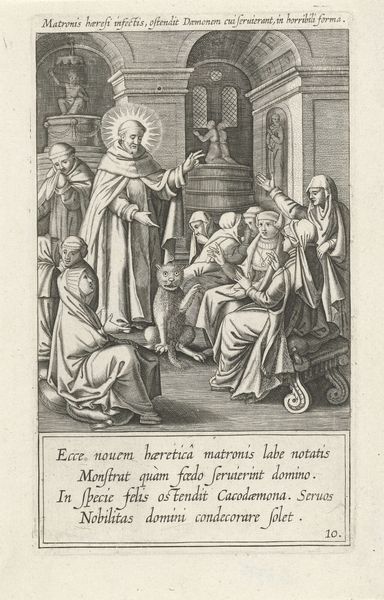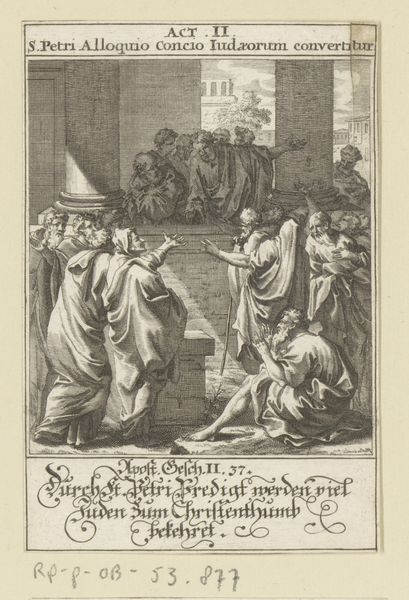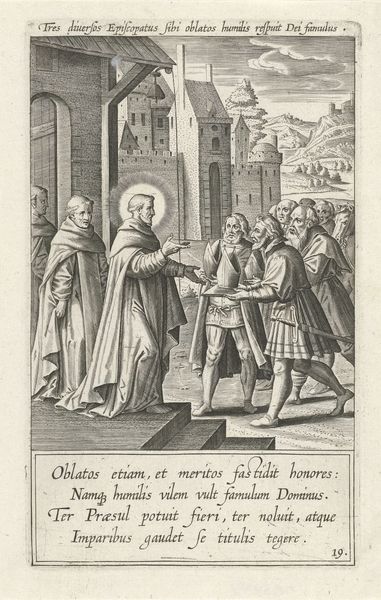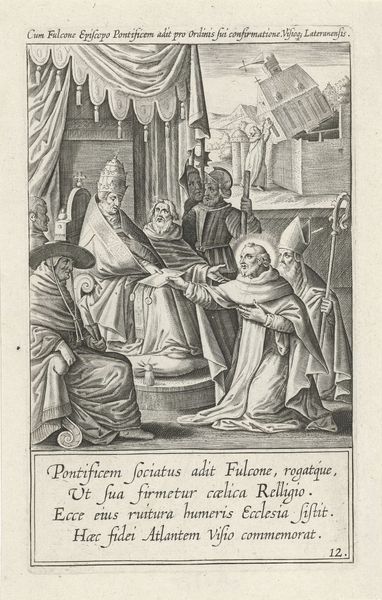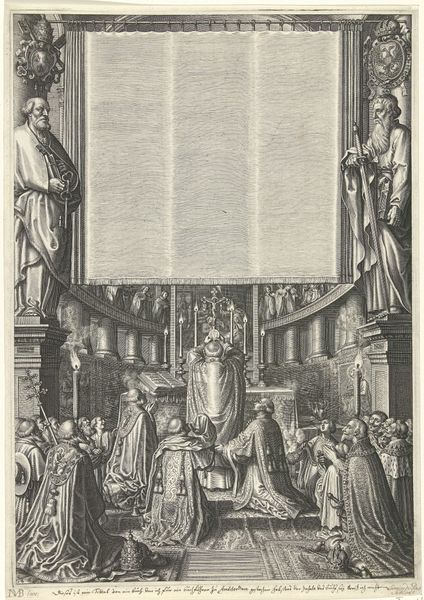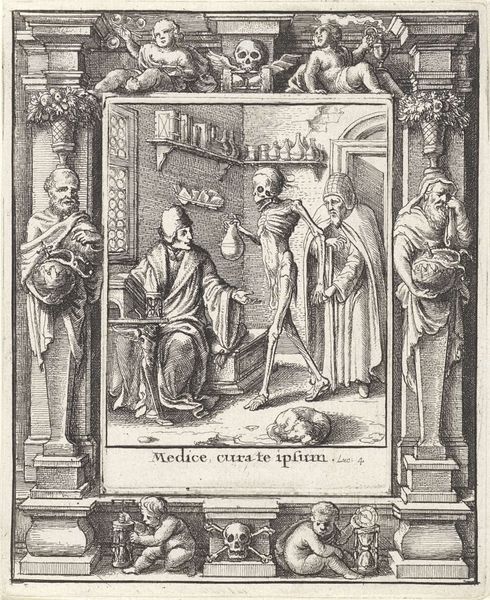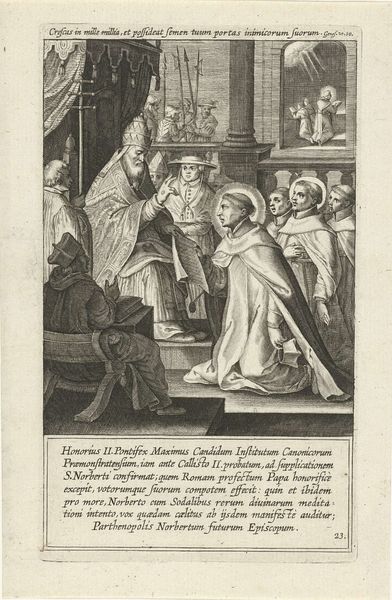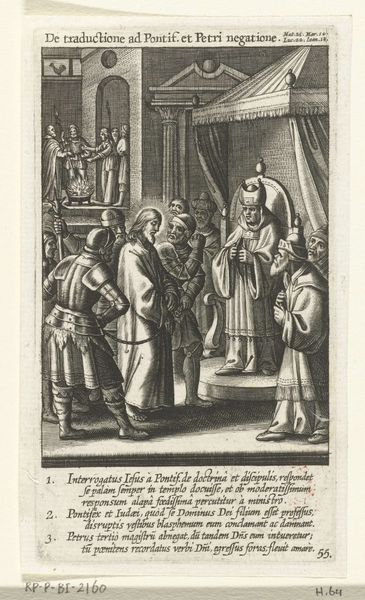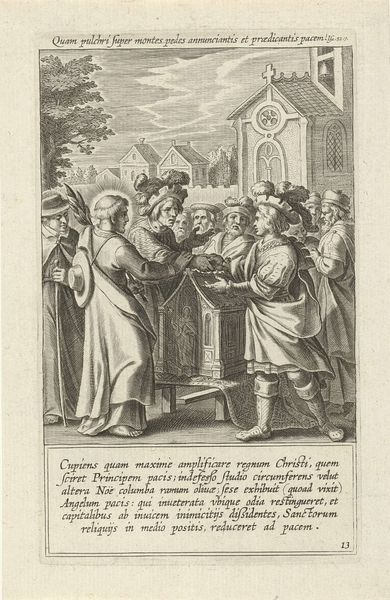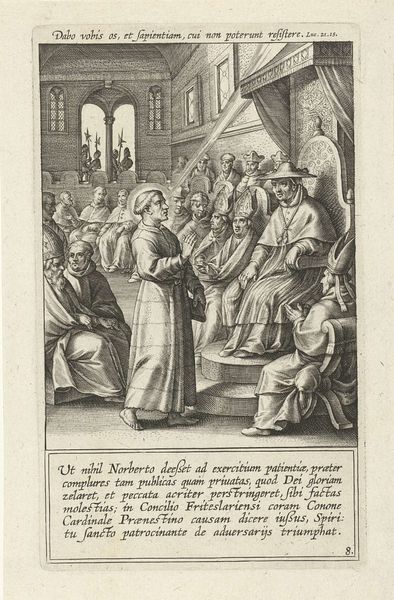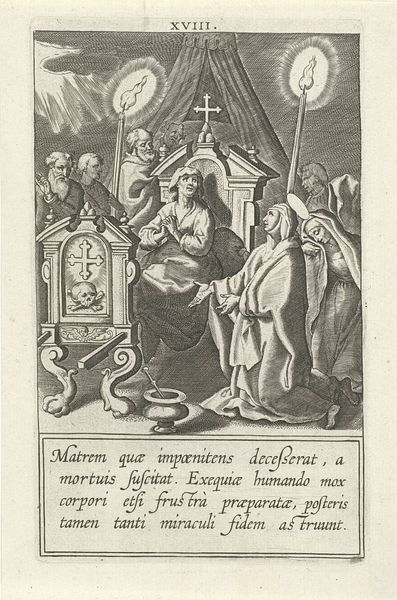
print, engraving
#
baroque
# print
#
figuration
#
history-painting
#
engraving
Dimensions: width 90 mm, height 150 mm
Copyright: Rijks Museum: Open Domain
This small print was made by Theodoor Galle in the early 17th century, using the technique of engraving. It is a process that involves painstakingly carving lines into a metal plate, inking it, and then pressing it onto paper. Here we see the miracle of Saint Dominic on a crossing. The linear quality of the engraving emphasizes the figures' robes and the texture of the stormy sea. The act of engraving itself, requiring immense skill and time, elevates the depiction of this religious story. Every line signifies labor, devotion, and an almost obsessive commitment to detail. However, Galle's print isn't just a demonstration of technical skill, it is an artifact of its time, reflecting the growing commercialization of art production. Prints like these were often made in multiples, allowing for wider distribution and consumption of religious imagery. The miracle becomes a commodity, accessible to a broader audience. In this work, the traditional craft of engraving intertwines with the burgeoning forces of capitalism, blurring the lines between art, devotion, and commerce.
Comments
No comments
Be the first to comment and join the conversation on the ultimate creative platform.
